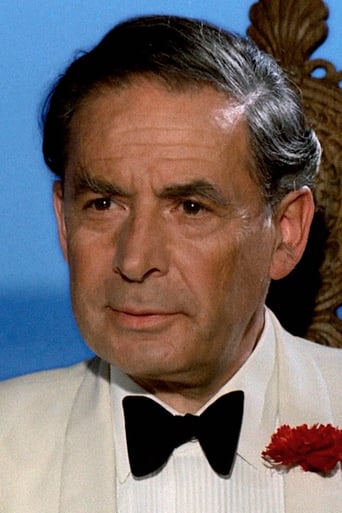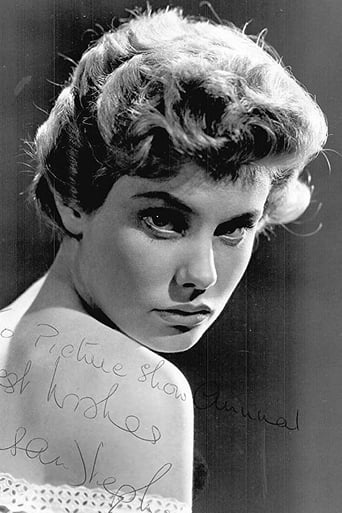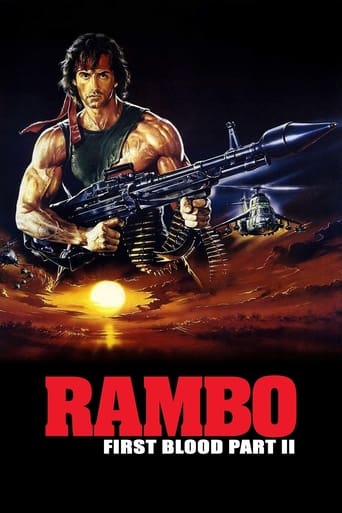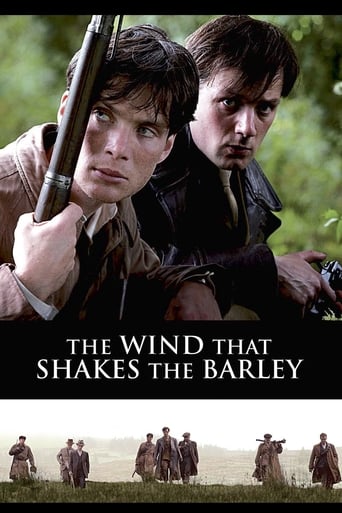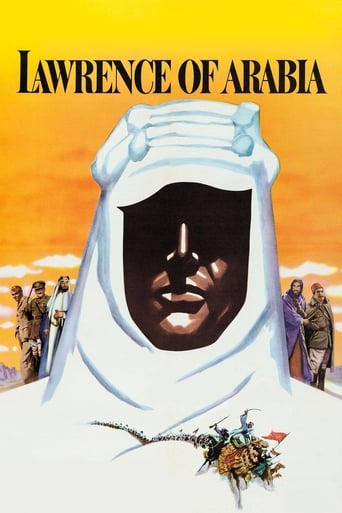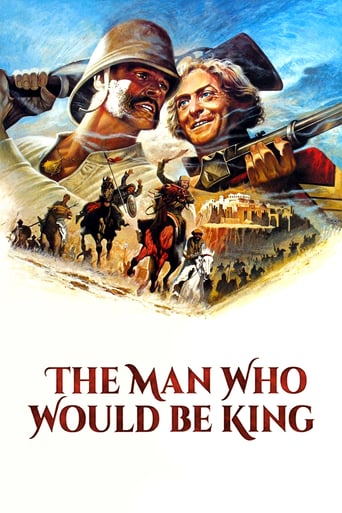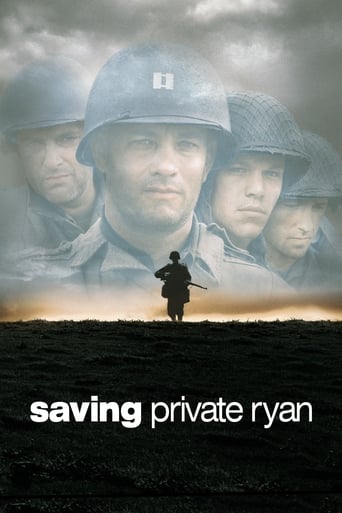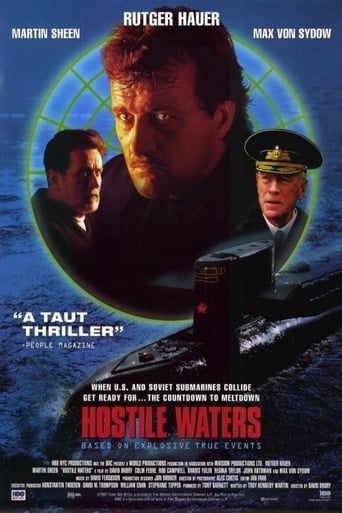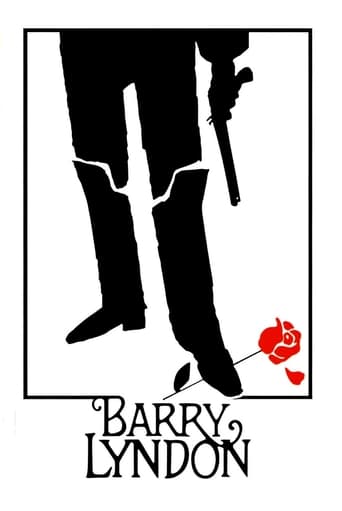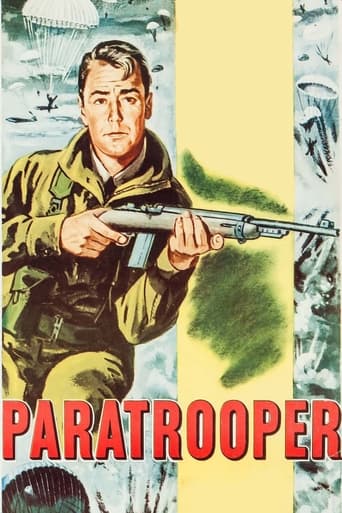

The Red Beret (1953)
Steve MacKendrick resigns from the US Army after causing the needless death of a fellow officer. Wanting to serve in the war, he enlists as a Canadian in the British 1st Parachute Brigade. He proves himself exceptionally skilled for a recruit, arousing the suspicion of his commanding officer who starts an investigation. He redeems himself during combat. The film was titled "Paratrooper" in the US.
Watch Trailer
Cast
Similar titles
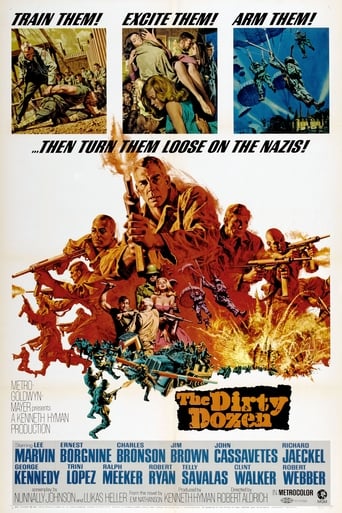
Reviews
Excellent, Without a doubt!!
The performances transcend the film's tropes, grounding it in characters that feel more complete than this subgenre often produces.
The movie turns out to be a little better than the average. Starting from a romantic formula often seen in the cinema, it ends in the most predictable (and somewhat bland) way.
Actress is magnificent and exudes a hypnotic screen presence in this affecting drama.
This film is a very good look at the start of the British airborne forces during World War II. "Paratrooper" was released in America in late December 1953, more than four months after its early August premier in the U.K. where it was called "The Red Beret." That is the name of the book from which the film is adapted, written by Hillary St. George Saunders. Columbia studios clearly made the film for people on both sides of the pond. So, the plot includes an American who enlists in the British Army in Canada. That's OK, and we know quite a few American fliers joined the war effort early by serving in the RAF. Here it provides the love interest part of the film that Hollywood often included for wider audience appeal. But, I think any number of other actors might have filled the role better than Alan Ladd. His Private McKendrick (aka, "Canada") seemed to have a chip on his shoulder. We learn of his background halfway into the film, and one can understand his experience affecting him. But, not that he would be so touchy and angry toward other men. Whatever the reason, his character doesn't come across as genuine. That aside, I give this film eight stars for its interesting and early look at jump school training and the start of the British Airborne. Years later, I served as a paratrooper in the U.S. 504th and 509th Airborne regiments (1962 through 1964). Americans train at the Ft. Benning, GA, jump school. I became familiar with the British Airborne while stationed in what was then West Germany. We had NATO (North Atlantic Treaty Organization) military exercises in Europe with the Brits, West Germans, and others. And, I was in charge of our airborne PIO (Public Information Office) when we sent one of our troopers through the British jump school. He photographed and reported on it. And, yes, the Brits were still jumping from balloons in training. From its very beginning jump training has undergone changes, just as the aircraft, equipment and other things have changed. The film shows the first planes the Brits used. They were modified Wellington bombers and men dropped through an opening in the floor. Soon, "Dakotas" (Douglas C-47s) arrived from the U.S., and troopers jumped out of side doors behind the propellers. In 1962, I trained in C-119 "Flying Boxcars," and then jumped from C-130s (Hercules transports) and helicopters in Germany. The Brits needed to make seven jumps to earn their parachutist wings. We had to make five jumps in the U.S. The film shows training in hand-to-hand combat. Americans got that in advanced infantry training before Jump School. We don't see any other physical training in the film, but all paratroopers have much more rigorous physical conditioning. One thing was glaring to me – I didn't see a single trooper land with a PLF (parachute landing fall). Maybe this wasn't developed until well after the war, but PLF landing had tremendous results in reducing injuries. In a nutshell, the trooper is trained to turn or orient his chute for a side landing, and then in a relaxed position as his feet touch the ground, he rolls his body to the right or left, with his calf, then hip, then side absorbing the impact. In the 17 jumps I made, I only got hurt once, when I landed on a big boulder right in the middle of my back. In this movie, Stanley Baker plays one of the training cadre, Sgt. Breton. On the first airplane jump, his chute fails to open and he falls to his death. The Brits called his malfunction a Roman candle. In the American airborne, we call it a cigarette roll. But it's interesting that the Brits apparently didn't carry reserve chutes. They didn't appear to have them on in the film. So far as I know, American paratroopers always have had a reserve chute on the front. If anyone had a cigarette roll or other malfunction, he would release the main chute and pull the ripcord on his reserve. I saw half a dozen or more uses of the reserves in my airborne service. Some other things missing from this film were training jumps from towers. In one scene, I can see what looks like a 250-foot tower in the background. I also enjoyed the portrayal of the chute packing unit. It's too bad they didn't show the actual packing tables. And the funniest thing in this film is the strange looking headgear the Brits wore in jump school. "Paratrooper" is a good portrayal of the early action of the British Airborne. I thank Steve Crook from London, who's review tipped me off to the background of Major Snow. Leo Genn plays the part very well in this film. Snow was John Frost in real life. He became best known after his paratrooper battalion took the north end of the Arnhem Bridge in Operation Market Garden in September 1944. The Brits held out four days against a German Panzer division. They were captured only after they ran out of ammunition. In the 1977 blockbuster movie, "A Bridge Too Far," Anthony Hopkins plays Lt. Col. Frost beautifully. Frost retired as a Major General in 1968, and was a close adviser on that film. The only thing I see wrong in this movie is the name of the first operation the troopers had. Major Snow calls it "Operation Pegasus." In fact, it was called Operation Biting, also known as the Bruneval Raid. There was a real Operation Pegasus, and it was the escape plan across the Rhine River for many of the Brits trapped by the Germans in Operation Market Garden. War movie fans and those who like history especially should enjoy this film.
Future James Bond director Terence Young, who later helmed "Dr. No," "From Russia, with Love," and "Thunderball," doesn't muck about in "The Red Beret," a low-budget but entertaining World War II thriller about British paratroopers. Clocking in at 88 nimble minutes, this Columbia Pictures release is a fast-moving epic with a first-rate supporting cast. Masquerading as a Canadian, Alan Ladd of "Shane" fame joins His Majesty's Army and trains as a paratrooper. He hides a flaw in his character. It seems that Private Steve 'Canada' McKendrick (Ladd)was an officer in the Army Air Corp who had problems and no longer relishes the idea of being an officer. The sparks fly between former pilot turned English and pretty Penny Gardner (Susan Stephen of "Three Spare Wives") who packs his parachute and sticks a handkerchief in it. This turns out to be a quaint old custom that Penny defends. Naturally, any wartime thriller about paratroopers features scenes where chutes don't open, soldiers collide in the air, or they injure themselves when they land. Leo Glenn is well cast as real life Major Snow who saw action against the Germans. Interestingly enough, Anton Diffring plays a Polish paratrooper; later, Diffring would specialize in roles as a German officer. The initial training jump from a balloon goes awry when their sergeant drops out of the balloon but his chute fails to open. Stanley Baker plays that unlucky sergeant. The first mission takes them into Occupied France where our heroes launch an assault on a German radar installation at Bruneval. Young and "Hell Below Zero" lenser John Wilcox stage some exciting combat scenes, especially in the castle setting during the radar raid. Later, the British start jumping from America aircraft, unlike British planes where they jump through a hole in the bottom of the fuselage. Producer Albert R. Broccoli would team up with Young in later Ladd vehicles and eventually they would make the Bonds. Scenarists Richard Maibaum, who penned several 007 epics, and veteran American scribe Frank Nugent of "Fort Apache" insert scenes of battlefield gruesomeness. Not only does one soldier jump to his death, but also another loses his legs during a mission. After the raid on the radar station, the British are flown into North Africa where they are ordered to destroy an airfield held by the Germans. During the battle, Ladd and company stumble onto a deadly minefield and the Germans arrive and set up mortars and machine guns to wipe them out if they refuse to surrender. Something similar to this happened later in the Clint Eastwood war movie "Kelly's Heroes." Anyway, Ladd rounds up a rocket launcher that they use it to clear a path and escape. I don't know why they did resort to their own firearms and blast their way through the minefield the same way that Rock Hudson would do in "Tobruk." Altogether, "The Red Beret" chutes the works with an atmopheric orchestral score from John Addison.
Not too bad for a typical Alan Ladd movie of its time (released in 1953). Not a must-see but it is entertaining. Having seen this movie a number of times, I was recently surprised to see what appears to be a lot of blue screen shots overlaid on backgrounds. Much of the static dialog seems to be shot on a sound stage and then superimposed on whatever was supposed to be going on in the scene.Of particular interest is the difference in equipment and training between British and American paratroopers. As with most Alan Ladd movies he's portrayed as the arch-typical quiet loner who, when pushed, reacts with sufficient violence as to be given plenty of space. In reality, Ladd was too small to be much of a menace to most (unless he's pulling a trigger). To give you an idea of how diverse his career was at this time, this movie was released in the same year as his hits "Botany Bay" and "Shane".
In real life, Alan Ladd was scared to death of flying (he preferred trains), but you'd never know it in this exciting action adventure set in early World War II.The old English method of training paratroopers by jumping from balloons is accurately depicted, as is the result of landing with an unopened parachute (the British, like the German airborne, eschewed the use of reserve parachutes).It's actually a pretty standard war movie, though the score is exciting and memorable, and the combat scenes, though dated now, are pretty well done, considering this movie was shot in 1953.Definitely worth watching!

